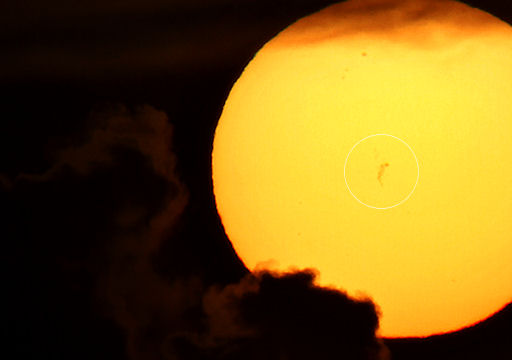CHANCE OF STORMS: NOAA forecasters estimate a 65% chance of polar geomagnetic storms on Nov. 23rd when a pair of CMEs is expected to hit Earth's magnetic field. The incoming clouds were propelled toward Earth by the recent eruptions of sunspot AR1618. Black Friday might be tinged red and green by the glow of high-latitude auroras. Aurora alerts: text, voice.
BIG SUNSPOT AR1618: The magnetic canopy of sunspot AR1618 is crackling with M-class solar flares, and NOAA forecasters say an X-flare could be in the offing. AR1618 has a delta-class magnetic field that harbors energy for the strongest eruptions. Any flares today would likely be Earth-directed as the sunspot is directly facing our planet. Solar flare alerts: text, voice.
Sunspot AR1618 is so large (10 times wider than Earth) that Jett Aguilar was able to see it this morning when the sun came up over Marikina City, the Philippines:

Photo details: Canon 100-400 mm EFL lens, Canon 2x Extender and a Canon 7D DSLR (1/8000 sec, f/81, ISO 100).